Level II Study Page
This
online lesson program is not intended to be a substitute for riding lessons,
instead is is intended to be a thorough introduction for non-riders and a
valuable educational tool to riders. Horses can be unpredictable at times
and can cause harm to inexperienced handlers, please seek a professional
instructor or trainer when applying your knowledge learned during this online
lesson program.
1. Correct grooming procedure
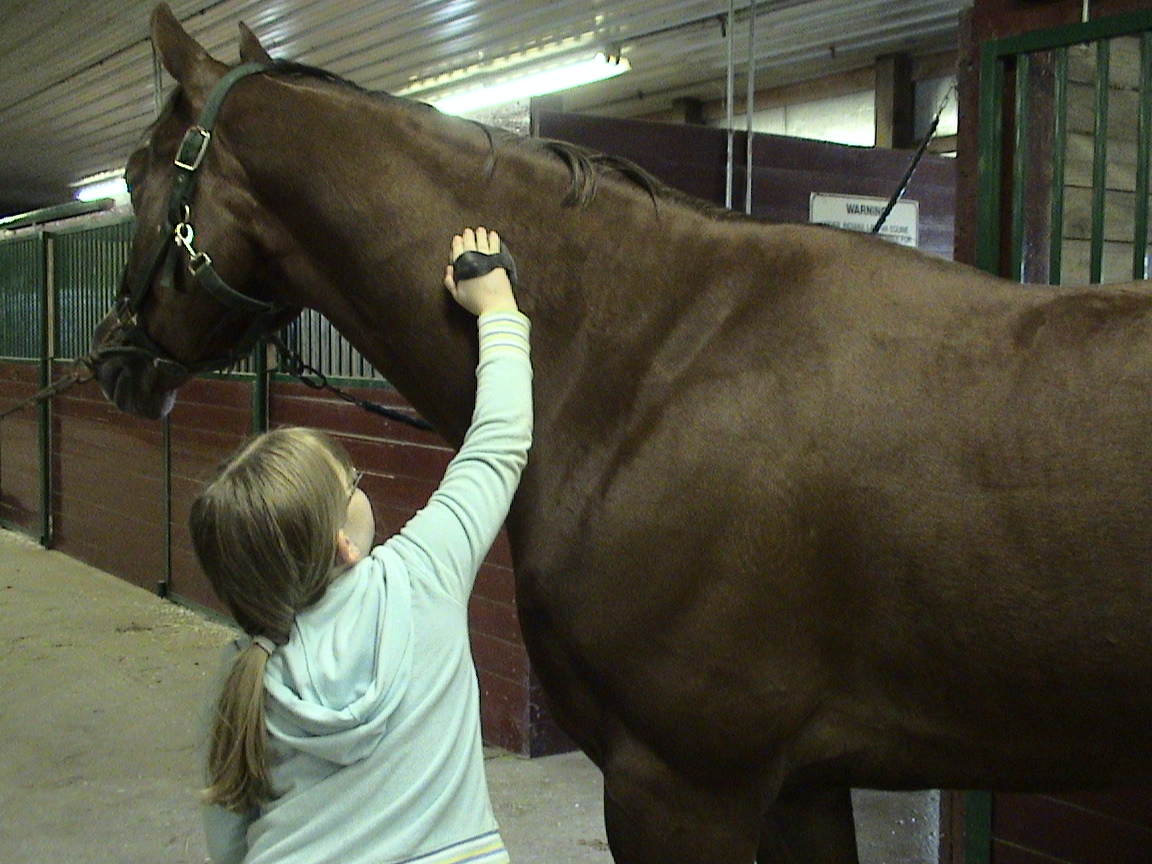 Curry comb-Use
vigorously in a circular motion starting on the neck and working towards
the hindquarters. Grasp the curry comb under the handle with
fingers curled over the edge. The curry comb is used to loosen
dead hair and dirt. Curry comb is to be used on fleshy parts of
the horse, not on face or bony parts of legs.
Curry comb-Use
vigorously in a circular motion starting on the neck and working towards
the hindquarters. Grasp the curry comb under the handle with
fingers curled over the edge. The curry comb is used to loosen
dead hair and dirt. Curry comb is to be used on fleshy parts of
the horse, not on face or bony parts of legs.
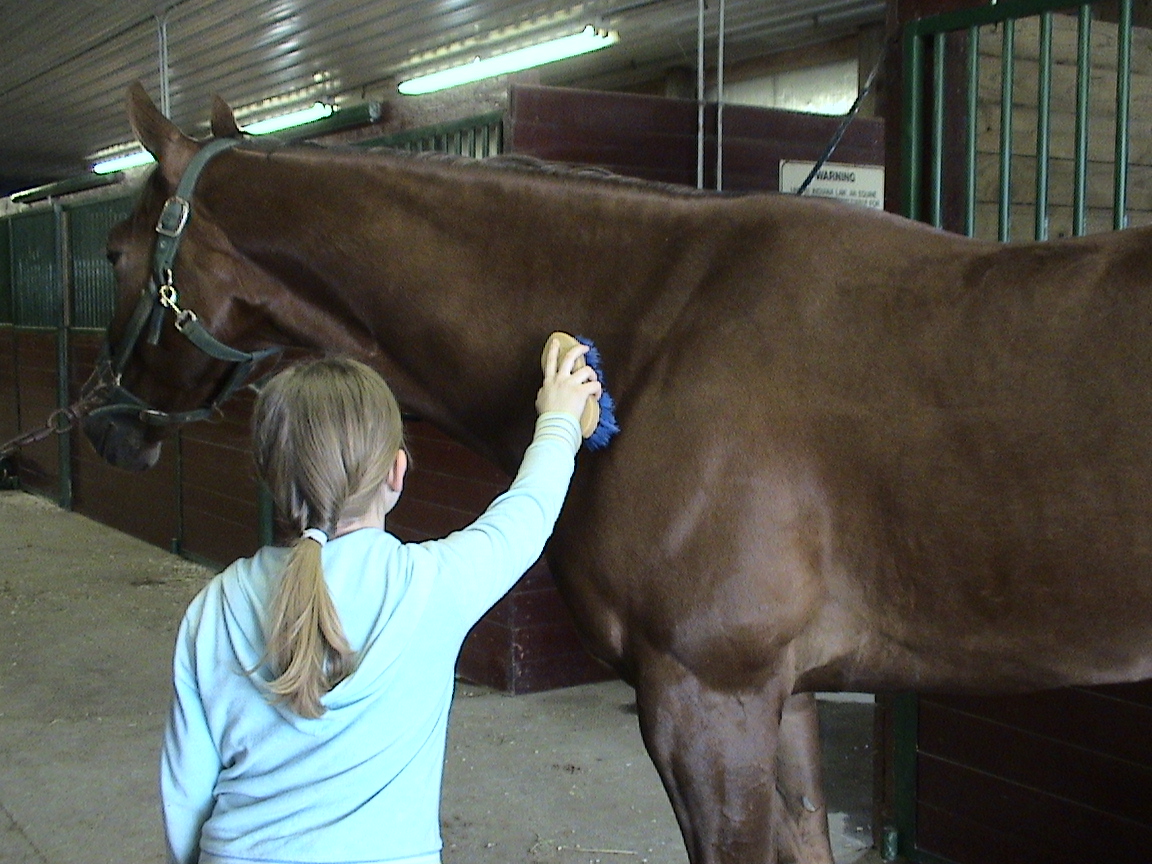 Hard body brush-Again
this brush is to be used vigorously, only this one is used in the
direction of hair growth (the same as when you are petting a dog).
Again start behind head and work towards hindquarters. This brush
may be used gently on face if horse has caked on mud on jowls, do not
use around eyes or muzzle. Use a strong flipping motion on the
rest of the body to remove the loosened hair and dirt from remaining
body parts.
Hard body brush-Again
this brush is to be used vigorously, only this one is used in the
direction of hair growth (the same as when you are petting a dog).
Again start behind head and work towards hindquarters. This brush
may be used gently on face if horse has caked on mud on jowls, do not
use around eyes or muzzle. Use a strong flipping motion on the
rest of the body to remove the loosened hair and dirt from remaining
body parts.
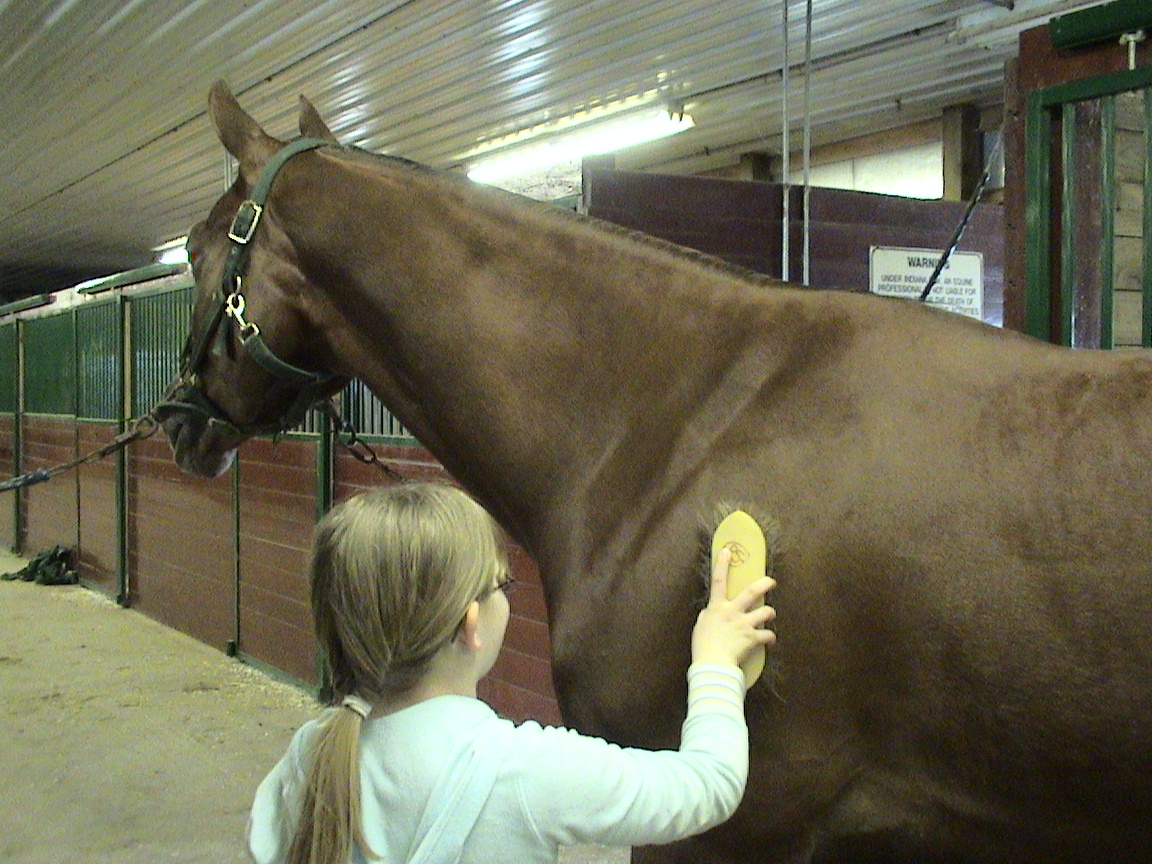 Soft body brush-Use on
all body parts. This brush is to remove light dust and shine the
coat.
mane and tail
comb-Simply comb through mane and tail. If you want your horse to
have a long and full tail do not use this on the tail except when tail
is wet and only after washing and applying a conditioner that will help
detangle the tail as you carefully comb.
hoof pick-see item #2 of
this study page
finishing cloth-This
item is good for removing any dust that settled back on your horse while
grooming. It is not necessary to use daily, but is great at horse
shows.
Soft body brush-Use on
all body parts. This brush is to remove light dust and shine the
coat.
mane and tail
comb-Simply comb through mane and tail. If you want your horse to
have a long and full tail do not use this on the tail except when tail
is wet and only after washing and applying a conditioner that will help
detangle the tail as you carefully comb.
hoof pick-see item #2 of
this study page
finishing cloth-This
item is good for removing any dust that settled back on your horse while
grooming. It is not necessary to use daily, but is great at horse
shows.
2. Correct
method of picking and cleaning out hoof
Standing on the
horse's left side, facing the horse's hindquarters, place left hand on
horse's shoulder. Slide hand down horse's leg and grasp above ankle
and squeeze. As you do this slightly lean into the horse's shoulder so
that the horse shifts it's weight off of leg. Pick foot up and cradle
hoof in left hand. Grasp hoof pick in right hand so that pick points
away from yourself. Remove debris from hoof by scrapping hoof pick in
the direction of the horse's toe (front of hoof as it sits on the ground).
When all of debris is removed you will see an upside down "V" on the bottom
of the hoof, called the frog. Be careful not to dig deeply in this
area, as this is the most sensitive part of the hoof. Lower hoof to
the ground and slowly move back to the hip area. Again place your hand
on the horse and slowly slide down the back of the lag ending above the
ankle joint. Squeeze slightly, lean should into horse's hip, as the
horse picks of the hoof, slide left hand under hoof and stretch leg to the
rear of the horse. Do not try and bring hoof out to the side as this
will cause discomfort to the horse. Pick debris out in the same manner
as the front hoof. When complete slowly lower the leg down to the
ground. While cleaning out hooves keep your feet clear of the area
your horse needs. Keep toes pointed in the opposite direction as the
horse's feet.
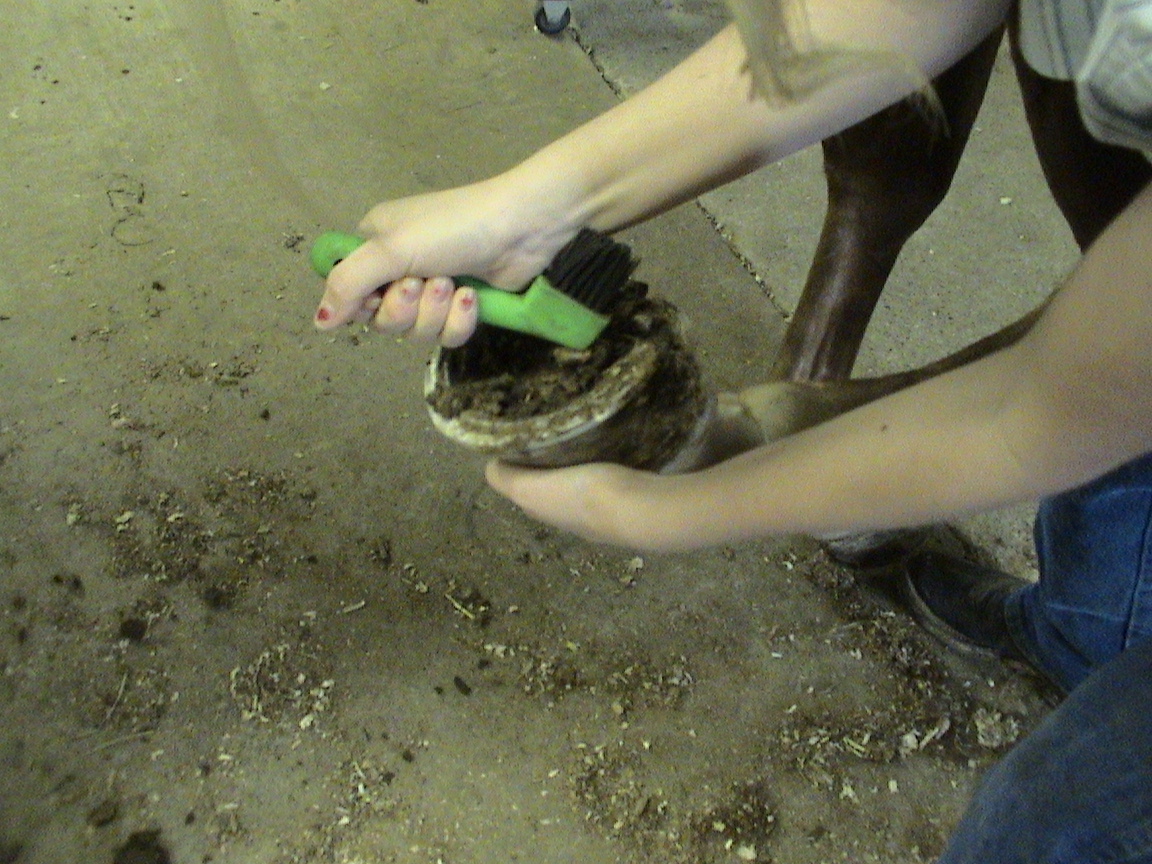
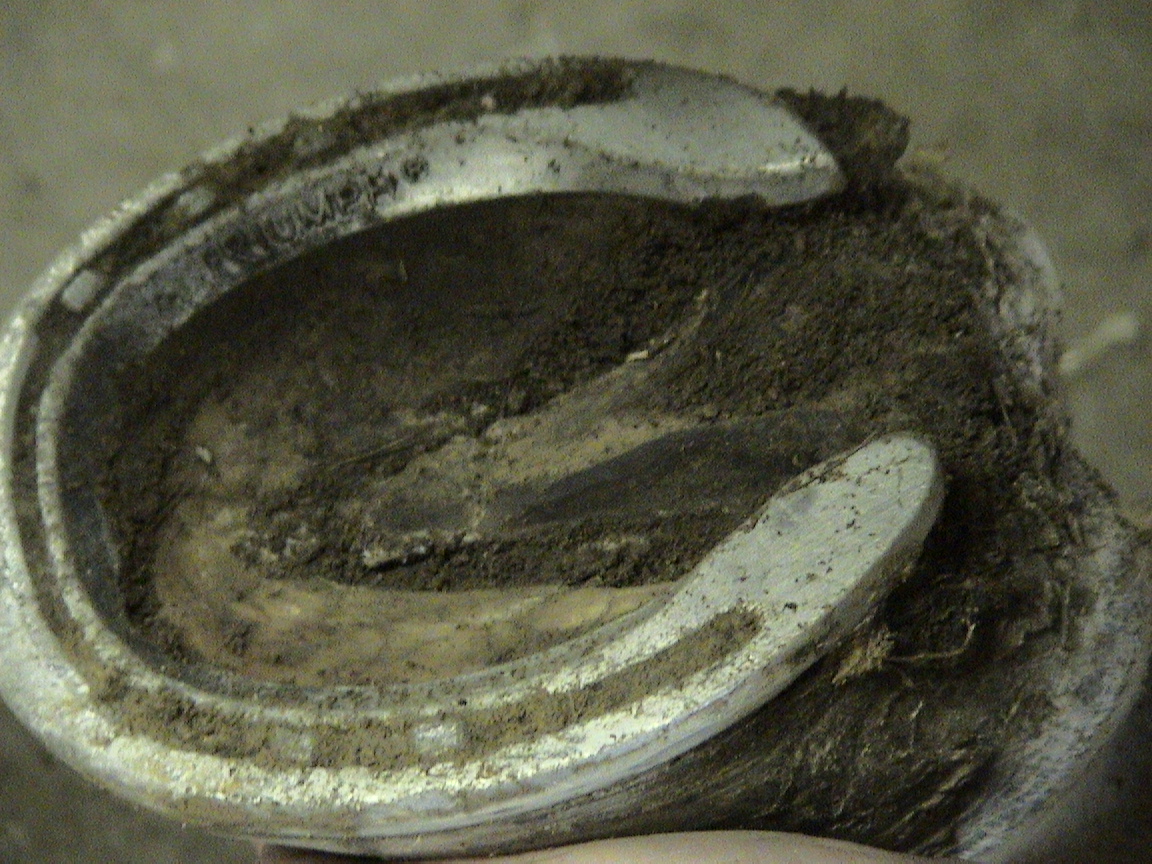
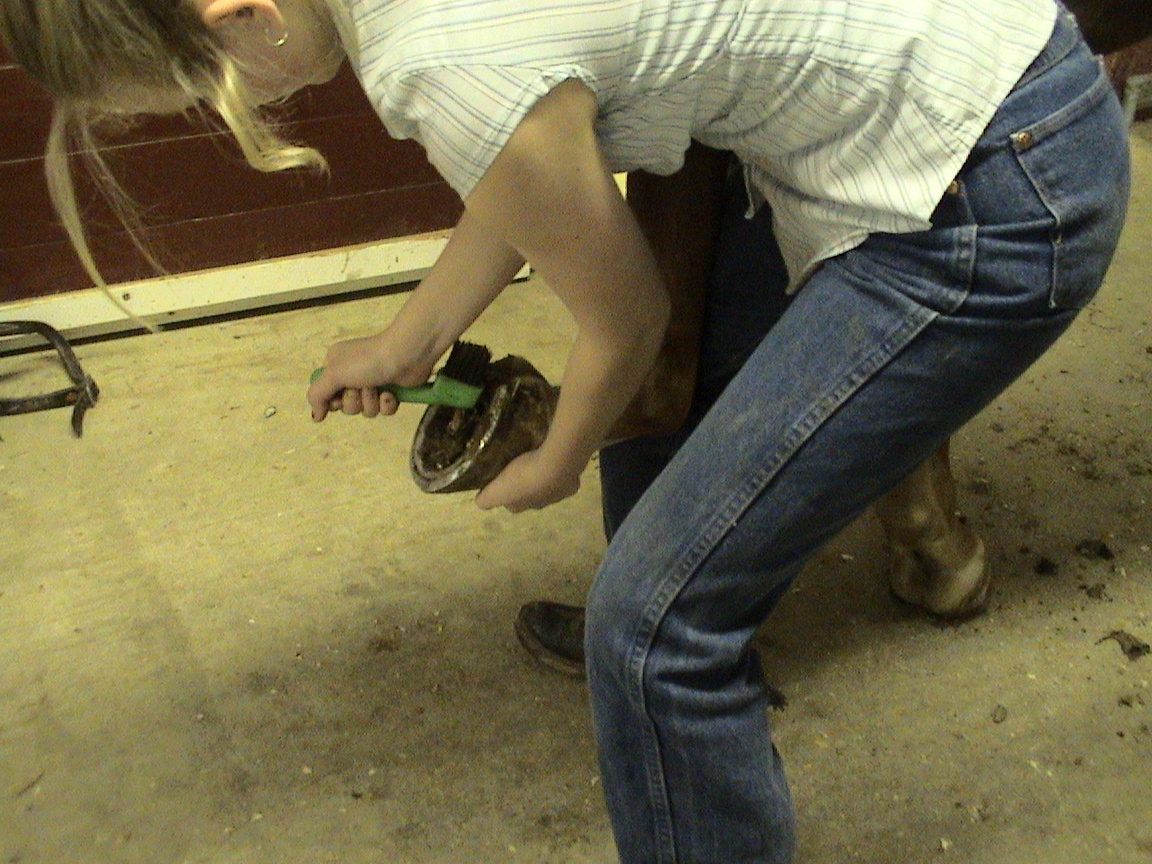
 1.
2.
3.
4.
1. Correct position to clean out front foot
2. Clean front foot showing the frog
3. Correct method of holding and cleaning out hind foot
4. Clean hind foot
1.
2.
3.
4.
1. Correct position to clean out front foot
2. Clean front foot showing the frog
3. Correct method of holding and cleaning out hind foot
4. Clean hind foot
3. Beats per gait
Walk-4 beats
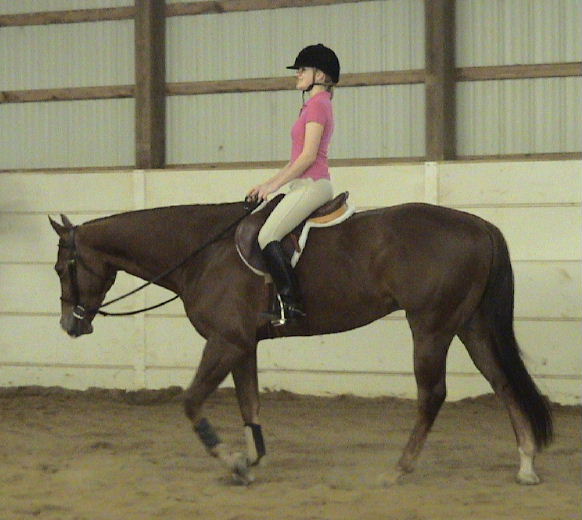 Trot and jog - 2 beats
Trot and jog - 2 beats
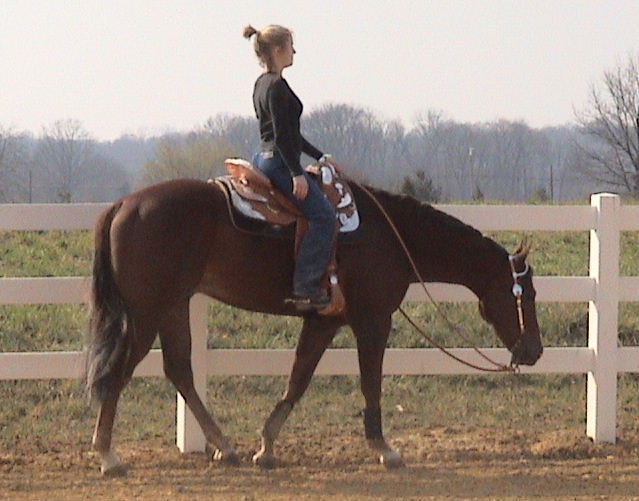 Canter and lope - 3 beats
Canter and lope - 3 beats
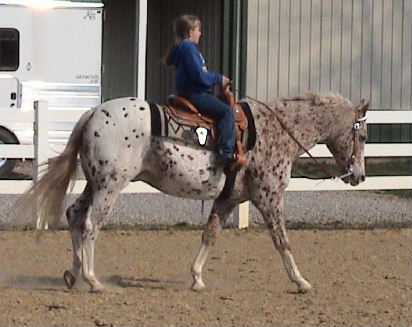
4. How the 5 natural aids communicate with the horse
Eyes ~ The direction in which your are looking directly affects your body
position therefore communicating direction and speed control to your
horse. Example: If you are looking in the direction you wish
to go, your body is in a balanced position, if you are looking down
towards the ground you weight shifts forwards and your heels come up out
of their recommended position.
Voice ~ Verbal communication such as "smoothing", "kissing", "clucking" or
asking for a stop by saying "whoa".
Hands ~ Controls the reins therefore controls speed and direction.
Seat ~ Shifting your weight from one seat bone to another can indicate
change in direction as in a slow turn to either side or as in asking for
a fast spin as in a reining pattern. Also communicates speed and
lateral (side to side) control.
Legs ~ Legs are used to ask for changes in direction along with speed
control.
The 5 natural aids
are all used in conjunction to communicate quietly and softly to the
horse. The rider will normally use all aids to prevent one aid
from looking obvious. Proper horsemanship is all about making your
communication with the horse as invisible as possible.
5. Correct attire for riding
Riding helmet - Specifically designed for
equine riding.
Long pants - No sweat pants as they are too slippery against saddle, overall
type pants are not recommended as they tend to rub legs uncomfortably. We
recommend jeans for western riding and breeches for hunt seat riding.
Shorts are not allowed.
Boots - We recommend "cowboy" boots for western riding and tall boots for
hunt seat riding. Hiking boots are not acceptable as they can get stuck in
the stirrup. Boots must have hard sole and at least 1/2" heel.
Shirt - Please wear a shirt that is made for activity, no spaghetti straps or
tube tops. Tops should cover stomach completely.
Hair - Long hair should be contained with
a pony tail holder or barrette. Short hair should be pulled back under
helmet.

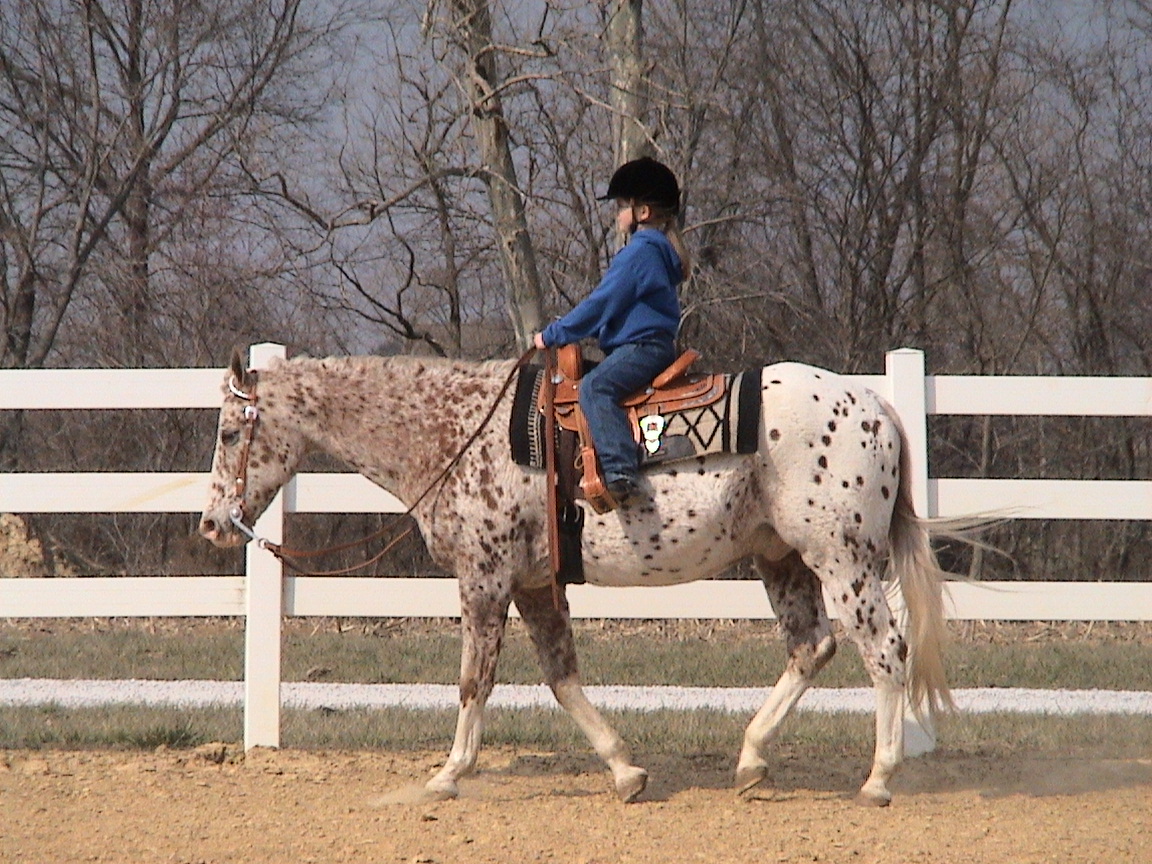 Examples of appropriate riding attire
Examples of appropriate riding attire
6.
Parts of tack
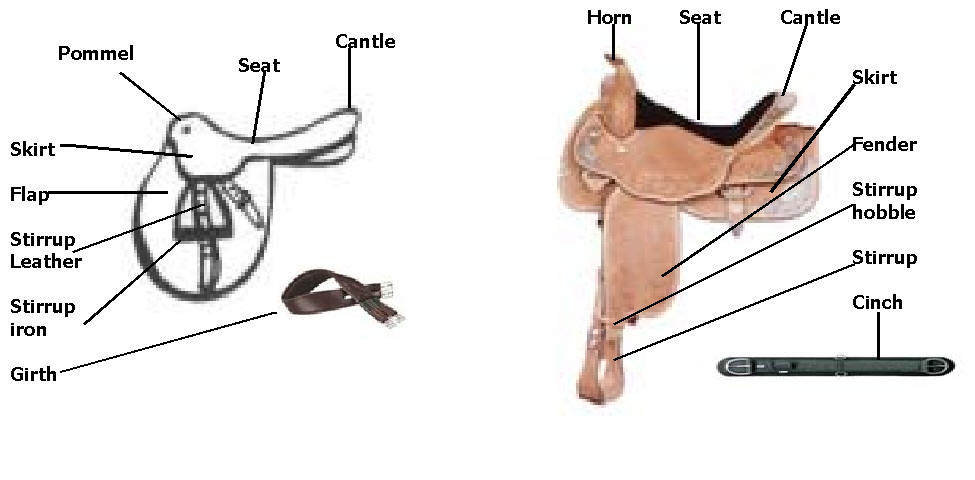
Click HERE to take Level II test
Click HERE to go back
to Online Lesson Program page
 Curry comb-Use
vigorously in a circular motion starting on the neck and working towards
the hindquarters. Grasp the curry comb under the handle with
fingers curled over the edge. The curry comb is used to loosen
dead hair and dirt. Curry comb is to be used on fleshy parts of
the horse, not on face or bony parts of legs.
Curry comb-Use
vigorously in a circular motion starting on the neck and working towards
the hindquarters. Grasp the curry comb under the handle with
fingers curled over the edge. The curry comb is used to loosen
dead hair and dirt. Curry comb is to be used on fleshy parts of
the horse, not on face or bony parts of legs.
 Hard body brush-Again
this brush is to be used vigorously, only this one is used in the
direction of hair growth (the same as when you are petting a dog).
Again start behind head and work towards hindquarters. This brush
may be used gently on face if horse has caked on mud on jowls, do not
use around eyes or muzzle. Use a strong flipping motion on the
rest of the body to remove the loosened hair and dirt from remaining
body parts.
Hard body brush-Again
this brush is to be used vigorously, only this one is used in the
direction of hair growth (the same as when you are petting a dog).
Again start behind head and work towards hindquarters. This brush
may be used gently on face if horse has caked on mud on jowls, do not
use around eyes or muzzle. Use a strong flipping motion on the
rest of the body to remove the loosened hair and dirt from remaining
body parts.
 Soft body brush-Use on
all body parts. This brush is to remove light dust and shine the
coat.
mane and tail
comb-Simply comb through mane and tail. If you want your horse to
have a long and full tail do not use this on the tail except when tail
is wet and only after washing and applying a conditioner that will help
detangle the tail as you carefully comb.
hoof pick-see item #2 of
this study page
finishing cloth-This
item is good for removing any dust that settled back on your horse while
grooming. It is not necessary to use daily, but is great at horse
shows.
Soft body brush-Use on
all body parts. This brush is to remove light dust and shine the
coat.
mane and tail
comb-Simply comb through mane and tail. If you want your horse to
have a long and full tail do not use this on the tail except when tail
is wet and only after washing and applying a conditioner that will help
detangle the tail as you carefully comb.
hoof pick-see item #2 of
this study page
finishing cloth-This
item is good for removing any dust that settled back on your horse while
grooming. It is not necessary to use daily, but is great at horse
shows.



 1.
2.
3.
4.
1. Correct position to clean out front foot
2. Clean front foot showing the frog
3. Correct method of holding and cleaning out hind foot
4. Clean hind foot
1.
2.
3.
4.
1. Correct position to clean out front foot
2. Clean front foot showing the frog
3. Correct method of holding and cleaning out hind foot
4. Clean hind foot
 Trot and jog - 2 beats
Trot and jog - 2 beats
 Canter and lope - 3 beats
Canter and lope - 3 beats

 Examples of appropriate riding attire
Examples of appropriate riding attire
